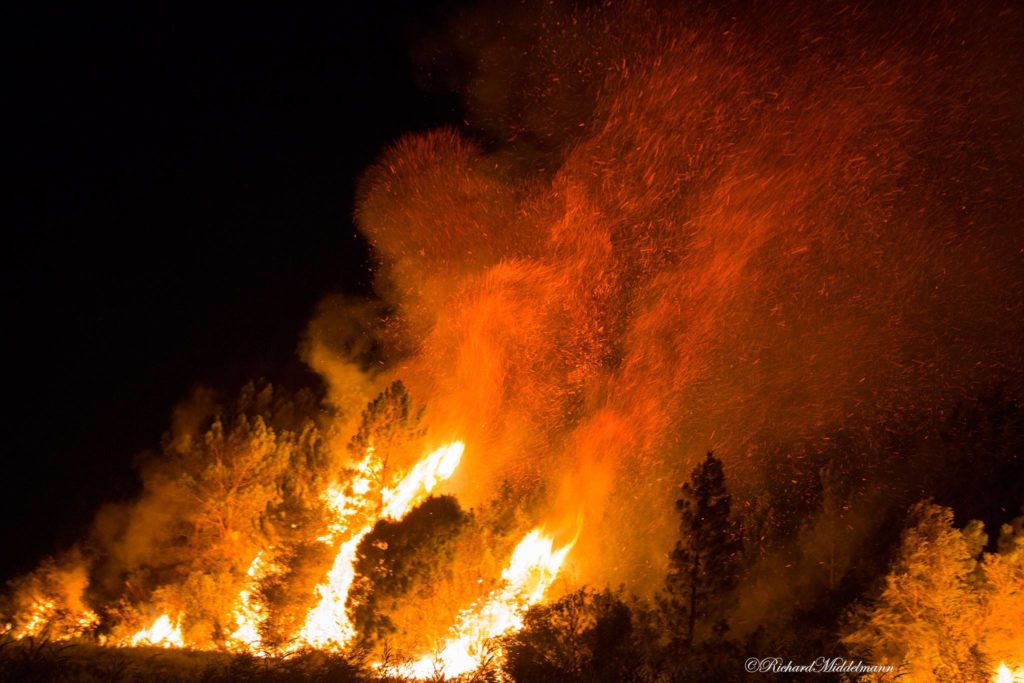
Comment summary on fire policy document Policy for: Creating and maintaining fire-wise vacant erven within urban areas Revision: September 2018 as prepared by the OSM. A post on Fire A natural occurrence in the Bot Estuary area covers many of the aspects of concern with fire in the Fynbos area and are included in notes on fire in the Fynbos. Extensive research has been done on fire in the Fynbos area as reported by van Wilgen and others in 2017 in the link below (PDF) Van Wilgen, B.W. & Wilson, J.R. (Eds.) 2018. The status of biological invasions and their management in South Africa in 2017 (researchgate.net)

Introduction
The “Policy for: Creating and maintaining fire-wise vacant erven within urban areas”, is an attempt by the Overstrand Municipality (OSM) to propose a legally-binding policy document to regulate the control of vegetation in order to reduce the fire risk in urban areas. The proposals in the document as it exists are inadequate in achieving its stated objectives. This comment on the document by Friends of the Bot River Estuary and Environs Society (Botfriends) attempts to bring this policy document in line with both fire protection laws and environmental laws.
Firstly, there is a need for a fire regulation policy that the OSM can follow. There needs to be a balance between presenting the least fire risk to infrastructure and maintaining a healthy, biodiverse environment, at the least cost. This needs to be done in an area, the Fynbos Biome, which traditionally has always had fire as a natural factor in its historical development. It needs to be done by applying the laws that govern the country as regards the fire prevention and fire protection laws and the environmental protection laws. In the Fynbos area these laws are often in conflict with each other.
The risk of devastating fires in many areas of the OSM has increased alarmingly in the last decade, due primarily to the expansion of the human population and its associated urban development, and to the changes in the composition of the vegetation. In this decade: both the urban development and vegetation changes within, and in close proximity, to the urban space, have been poorly managed as regards the conflicts between fire prevention and environmental protection. Some urban areas have reasonably low fire risks even in this fire-prone area, but certain areas have very much higher fire risks.
The risks of a Knysna-type fire are extremely high, especially in Ward 8, the immediate environs of the estuary and in other areas under the OSM’s control. This has been reported on elsewhere and consistently ignored by the OSM fire department and the OSM environmental department. It has been escalated to the heads of the DEA&DP and SANBI amongst others, as it is primarily an invasive species problem (developed mostly in the last decade by government not applying existing environmental laws and regulations, as was the case in the Knysna fires).
The initial draft document from March 2016, which was a revision itself, has not significantly changed, despite comments made by various experts including the DEA&DP and Cape Nature who are tasked with approving environmental assessments, and as you will see from the comments made below, the OSM have failed to provide a balanced policy document.
Questions were asked on 4 April 2018 by Bernard Niemand of the DEAP, for advisement on the NEMA (National Environmental Management Act) and NEMBA (National Environmental Management Biodiversity Acts) and their regulations, as they applied to implementing by-laws and policy. He asked for comment by 4 May 2018: rather short notice.
On 7 May 2018 Chanel Rampartab from Scientific Services commented on the policy document, asking why NEMA and NEMBA regulations were not being applied.
On 11 May, Cape Nature commented on the draft policy document and commented that the fire chief of the OSM said that the document had already been through a public participation process but that it was the first time Cape Nature had been alerted about the document.
Copies of the full comment document and the comment summary on fire policy document were forwarded to the OSM’s Environmental Department (Liezl de Villiers and Penelope Michaels) but it would appear that little or no input from this department of the OSM was made on the document. Certainly the national environmental laws which should apply have been ignored and not even included in the policy document, except for some forestry laws which are not really applicable to the area which this policy document is purported to cover.
Generally, the document as it is presented in the September 2018 revision should be scrapped. It is almost entirely from the point of view of fire protection at the cost of private landowners. The recommendations by the DEA&DP, Scientific Services, Cape Nature and the Kogelberg Branch of the Botanical Society of SA, amongst others, have been ignored, as have the NEMA 1998 and NEMBA 2004 acts of legislation. As stated at the start of this comment on the policy document, there has to be a balance between the fire regulations and environmental regulations. Many of the more than 1500 indigenous species which occur in this area are endangered and are referred to generally as Fynbos and are protected under general regulations. Many of these species are endemic to small areas within this region; some new ones have only recently been discovered. The application of this policy, as it is, and I quote from Cape Nature “anything outside of a proclaimed nature reserve is targeted for clearing of all vegetation, not only aliens species (which are also not being targeted effectively)”. Scientific Services quote, “landowners should not be obligated to clear indigenous vegetation”, and “All AIS (alien invasive species) to be cleared in terms of CARA and NEM:BA regulations”, is ineffective. These comments, as do the detailed, specific comments made by Botfriends, illustrate how unworkable and unlawful the proposed policy document is, in its present form. The application of this policy document may achieve the reduction of fire risk but would result in the total destruction of fynbos creating an ecological desert with a very unstable, unsustainable vegetation environment dominated by very few species, which could in a very short time lead to potentially high fire risks. Examples of this poor management strategy already exist in large patches in the area.
Friends of the Bot River Estuary and Environs know the area well and have the expertise in both fire prevention and environmental protection to assist in workshopping a new document, providing training where necessary and identifying the worst invasive alien plants (IAPs).
Comment summary on fire policy document was prepared by Michael Austin and Bruce Bayer on behalf of Friends of the Bot River Estuary and Environs
Sept 2018.
The full detailed comments on the fire policy document are available from Greenheart projects ([email protected]).

Recent Comments